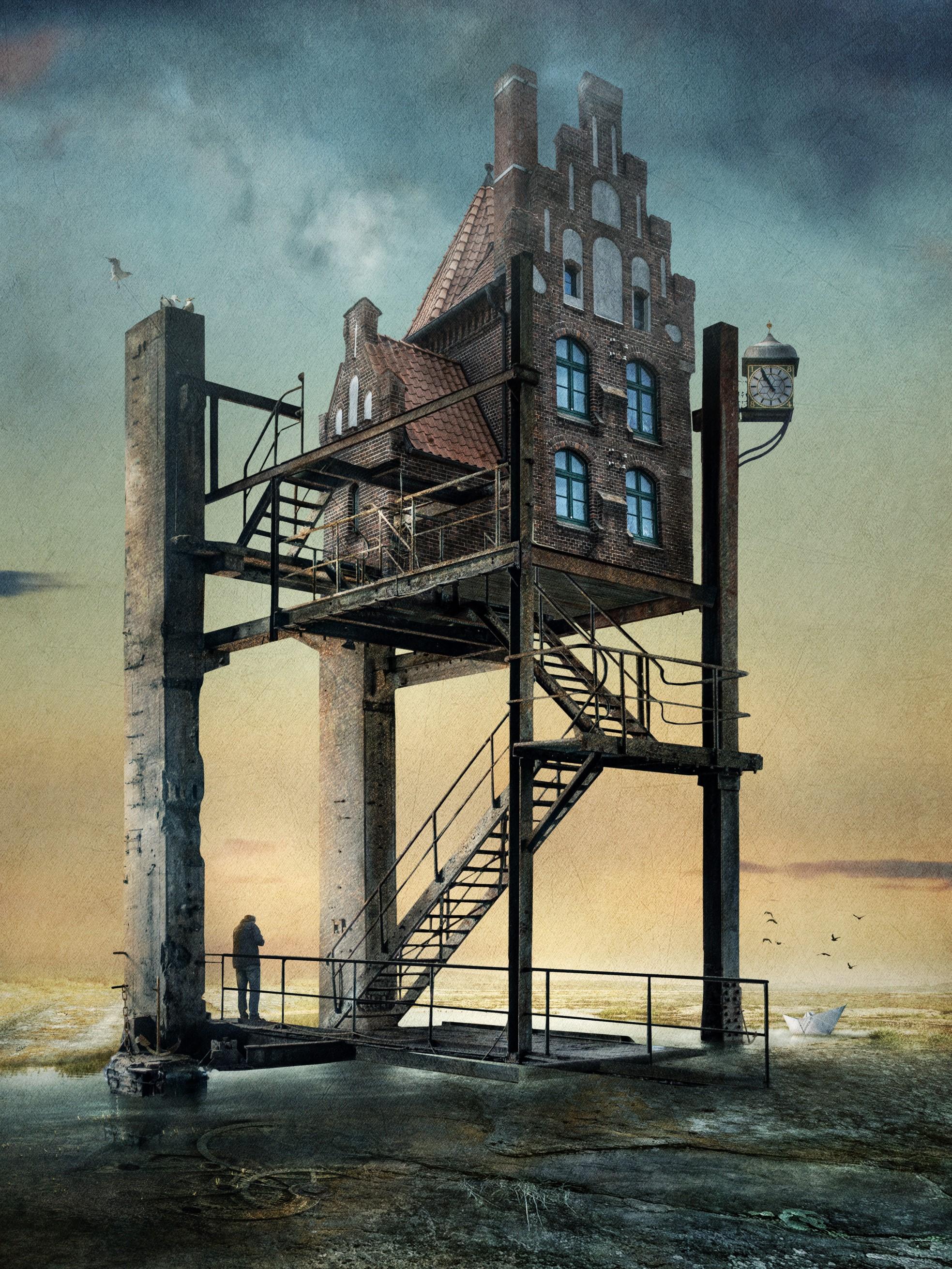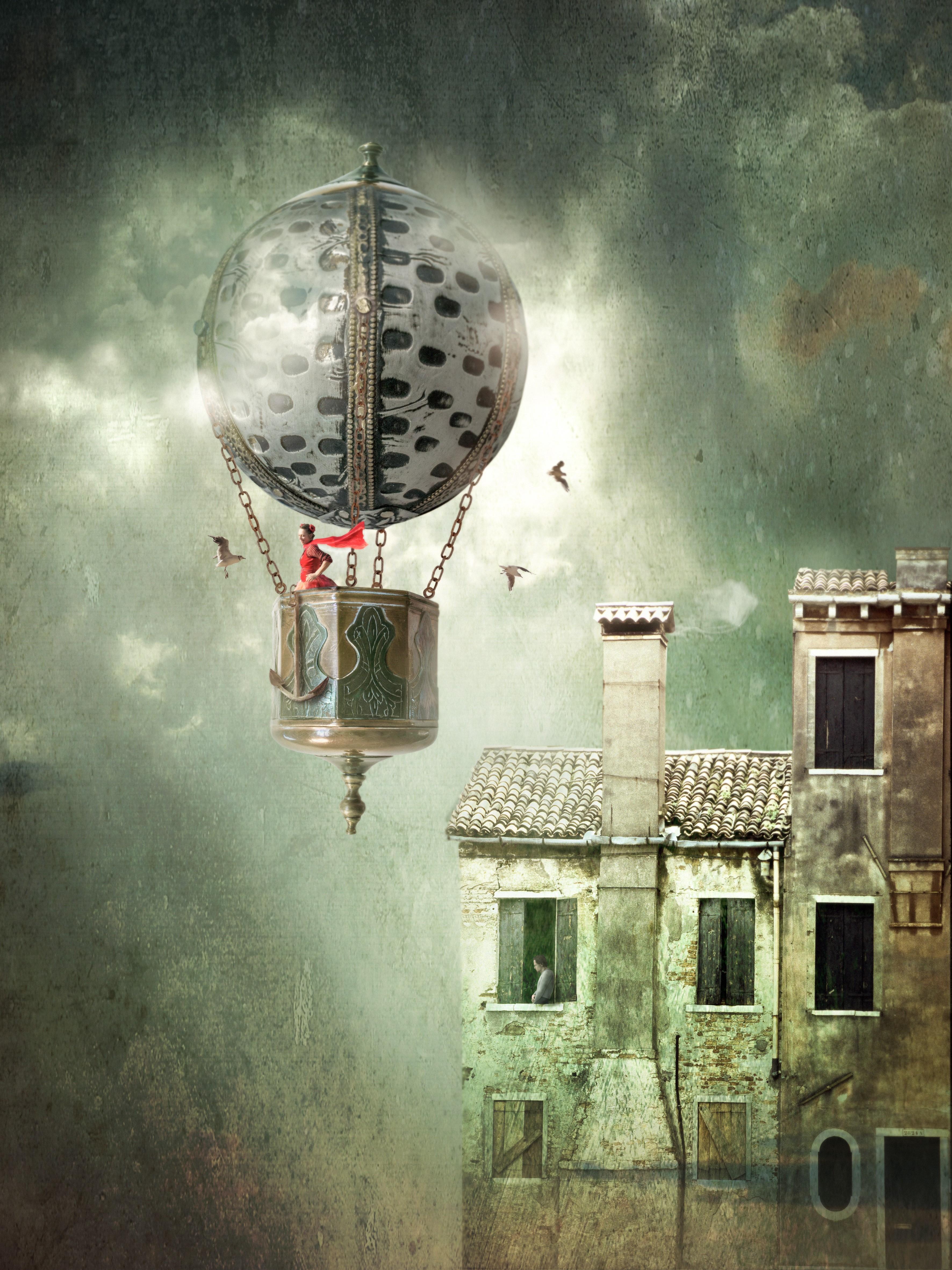
6 minute read
LITTLE STORIES, DARK AND CHEERFUL DREAMSCAPES
The RPS Benelux Chapter INTERVIEW
Brigitte KuckenbergWagner
“It's not that important what you see, but how you can see it”
As photographers we are inspired by many
other photographers. Sometimes you see something completely different then your own work but it has a ‘wow factor’. The artwork of Brigitte - from Germany - has that factor!
On your website you write “It's not that important what you see, but how you can see it.” Can you explain what you want to express?
This sentence was uttered some years ago by a photographer from Malaysia whom I had met briefly at an award ceremony in Linz (Trierenberg Super Circuit). Whether this statement really came from him or whether he was just quoting another, I don't know and it's not that important but it has stuck with me ever since. After all, it fits in perfectly with my work. I don't document, but create pictures with photographic means that have been created in my imagination. Seemingly uninteresting, simple things can take on a completely different meaning when they are removed from reality and assigned to other objects in a different size.
Your work is also described as ‘dreamscapes‘. I must admit, the results of your imagery uses a lot of creativity and post processing skills. Why did you start with these fantasies and surreal images?
I can't say why but I remember that even as a child I lived a lot in fantasy worlds, perhaps because I was forced to occupy myself alone for lack of other playmates in our neighbourhood. For example, I often played with imaginary dwarves and elves and tried to draw them. Perhaps my direction was determined from that time. Fantasy and surrealism continued to accompany me and remained even during my studies in free painting and graphics, and later has become the predominant theme.
What was the trigger? Other photographers, personal reasons, expression, photography as a tool, technical skills…?
For several years, drawing and painting were my means of expression. Although I had always taken a lot of photographs, I only used them for documentation and as a memory aid, for example to capture landscapes, lighting moods, etc. The pictures that emerged afterwards were always somewhere between real and surreal and were my way of expressing myself, processing my experiences and my thoughts. With the further development of digital photography and image processing, photography took on a completely different meaning for me: as a fantastic medium for my fantasy worlds.
Little by little, I switched from "analogue" painting to digital art - my husband, who works in the IT-sector and provides me with the best technical support, is not entirely innocent in this! Digital technology opened up unbelievable experimental possibilities. It makes it possible to create new worlds with parts of the picture, fragments of reality, my dream worlds.
The final results are completely created by you: Photos, rendering and editing. Are you able to explain about how you start and how you develop your ideas into impressive artwork?
I only use my own photos and since I take a lot of photos I now have a huge archive. I sort the photos that I think are relevant by keyword to make them easy to find again. If an existing picture doesn't fit, maybe because the light or the perspective isn't right, I try to take specific photos. If the desired project only exists in my imagination there is still the option of building it in 3D (I use Blender), rendering it and then texturing it in Photoshop. Ideally, the rendered parts cannot be recognised as such.

© Brigitte Kuckenberg Wagner - What about earth? Page 5 | © Brigitte Kuckenberg Wagner - My little island


The path from the idea to the finished image is very different. Sometimes I already see another image in front of me when I photograph something or I read, hear, see something and an idea arises in my head. Often I dream images... in the best case I remember them and manage to realise them. Sometimes I'm just fascinated by some object, then it's often enough that I free it in Photoshop and place it in front of a different background... then I just try to let myself drift and let the picture develop itself. There's always a point at which I recognise it and then specifically finish it. The finalisation itself is done in Photoshop. I put the individual parts of the picture on top of each other in many layers and there are also several partly masked adjustment layers dealing with light, shadows, colour tones etc. that have to be adjusted. I supplement missing parts with matte painting.
Nature is often a subject in your work. For what reason are you influenced by nature and the climate?
Of course, the topic of man and nature concerns me and I worry about how future generations will fare. Almost every day (at the moment somewhat suppressed by Corona virus) one hears and sees contributions in the media about climate change, environmental pollution, etc. You can see how badly the forest is doing when you go for a walk. Apart from living as environmentally consciously as possible, I can't do much about it on my own but I always take up the subject in my pictures to draw the viewer's attention.

© Brigitte Kuckenberg Wagner - Put on your Sunday clothes Pages 8-9 | © Brigitte Kuckenberg Wagner - Not available at the moment


And what is your relation with time and technical constructions in your images?
Yes, time... somehow intangible, even if you can measure it with all kinds of technical constructions. I probably learned to love it from my (Dutch) grandfather. He was a watchmaker and made me happy as a child when I was allowed to sit in a corner of his workshop and "repair" old watches. I had a box of discarded parts and was allowed to screw, equipped with a magnifying glass and the smallest tools. It was also a great honour to be allowed to wind up the many clocks that hung on the walls in the shop and ticked more or less loudly but comfortably.
Technical constructions still fascinate me today, whether it's the gears of a clock or large machines. Together with the theme of time, these always provide inspiration for pictures.
What do you have you had in mind for several years, but is not finished yet?
I would love to see more of my images on covers - books, DVDs, etc. - in addition to the current calendars and reproductions.
You have created so many impressive artworks, what is the next step for you?
I don't really ask myself this question. I like to take part in international competitions again and again and am happy to receive an award and thus a confirmation of my work every now and then. I just keep working, realising ideas as my head is full of them and if I can reach the respective viewer and trigger emotions wonderful!
If you want to see more wonderful examples of Brigitte’s artwork, please visit her website, Facebook or Instagram pages.
© Brigitte Kuckenberg Wagner - Time Slot

© Brigitte Kuckenberg Wagner - Just in case Page 15 | Brigitte Kuckenberg Wagner - Let your dreams fly Pages 16-17 | Brigitte Kuckenberg Wagner - And now?








